Text
Reasons why the City of Boston's should not implement COVID Passports

Implementing COVID vaccine passports could provide a healthier environment for the citizens of city of Boston, however, the city should continue not mandating vaccines to enter establishments as it:
1) disproportionate effects small business owners,
2) adds pressure to the already constrained budget,
3) and exposes the city to additional cyber security risks.
In addition, it’s critical for the mayoral election to ensure we continue to maintain our stance on not implementing additional strains to our already burden community. As of February 2021, Suffolk County which includes the city of Boston, has 46%[1] of their voter’s undecided (unenrolled), while other cities, like New York, who have implemented these mandates had a higher percentage of democrats who tend to me more favorable to these mandates. Voters who most likely will not be at the polls will be people of color, whom, have a varied relationship with the health care system and make up a high percentage of unvaccinated individuals. It is critical we ensure we continue to protect our mission of equality and protect the community’s overall health.
[1] https://www.sec.state.ma.us/ele/elepdf/enrollment_count_20210201.pdf

1) The cost of creating an effective Covid passport for the city of Boston is too high with the additional demands on the city’s $3.6B budget. For the remainder of 2021 the city expects to increase its public health budget by $13M[1] and to $150M for 2022[2]. The costs of creating this app would be comparable to the New York City costs, which is currently at $17M over the next 3 years[3] and has a monthly licensing cost of ~$200K (for 2M people). Governor Cuomo of New York had the ability to expediate the approval of the passport when mayors were granted more authority to act against covid during the midst of the pandemic avoiding stringent government procurement procedures. Since then, the mayors’ powers have been scaled back and it would be more difficult for a mayor, like yourself, without those powers to have the ability to implement those mandates.
[1] https://www.boston.gov/sites/default/files/file/2021/04/1A-Volume%201%20-%20Executive%20Summary_0.pdf [2] https://www.boston.gov/departments/budget/fy22-federal-funds [3] https://www.nytimes.com/2021/06/09/nyregion/excelsior-pass-vaccine-passport.html

2) Cyber security risks for the city are high. Proper implementation of the platform with the security needed to maintain an equitable and safe society are too high and unknown. It has been noted in NYC that the privacy protections in the app they are building, Excelsior Pass, remain unclear, including how blockchain technology will play a role. To further brainstorm which types of security risk we will be exposed to as the city of Boston I conducted an analysis of the security cards, which provide an overview of the types of motivations and resources someone trying to gain unauthorized access to data in the system or computer.
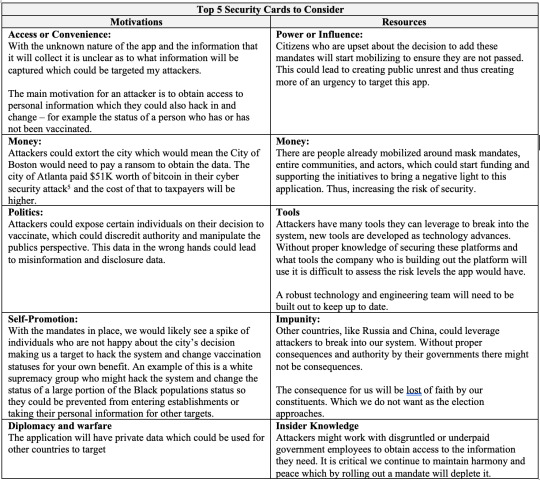

3) Increases inequality for marginalized communities. The purpose of the mandate is to increases the number of citizens vaccinated. According to google statistics, ~70% of the city has been vaccinated and ~80% have their first dose, higher than New York City which is at 66% and 73% respectively. When looking at the racial breakdown of the most recent vaccination records, we can note that the largest percentage of population not vaccinated are Native American (36.6%), Black (53.1%), and Latinx (54%)[1]. Thus, when we think who works in these services and visits the restaurants which we plan to add mandates to we would disproportionality be affecting these communities. It is critical to note that individuals with the ability to access a COVID passport are required to own a smart phone, access to internet, and be tech savvy, this mandate will exclude individuals in poverty and the elderly. All these concerns go against the rollout of our equitable COVID support initiative.
Over the last couple of weeks, we have seen an increase in the number of vaccinations for these marginalized communities. The increase vaccinations can be attributed to a shift in a community centric approach making the vaccine available in places this community visit with workers they can trust. Sending vans with vaccine to visit the communities has also been successful as it makes it more approachable. Overall, the continuous investment in marketing targeted to this community will be more advantageous than spending millions on creating an app which we will probably exclude a portion of the population.
Focus on the unknown data security, strained budget allocation, and continuous equity.
To drive our point forward it will be critical for us to communicate with the communities the cities focus on health and welfare for our citizens. The purpose of a vaccine passport would be to increase vaccination; however, we still don’t know if that will help increase the vaccination rate and we won’t know until NYC launches their application. Mandating COVID passports will not bring in those individuals who are not vaccinated – some are already upset about the government imposing mandates another one which the government cannot properly enforce and secure would be more detrimental to the city. A community centric approach and making the vaccine more approachable to these communities will increase the vaccination.
As mentioned above ~70% of the City of Boston’s population is fully vaccinated. With employers and schools adding mandates it will help increase the percentage of population vaccinated. I don’t think we will reach a 100% vaccination rate, however, by continuing to impose regulation on those who do not want to be regulated will create additional burden and costs on the city.
To continue to drive your mission forward and potentially win the upcoming mayoral election, it will be critical to maintain your stance. The funds which would have gone to create this app could go to creating more equitable COVID relief to small businesses and communities of color.
[1] https://bphc.org/whatwedo/infectious-diseases/Documents/Vaccine%20Reports/Boston_COVID-19_Vaccination_Report_22Oct2021.pdf
[1] https://www.sec.state.ma.us/ele/elepdf/enrollment_count_20210201.pdf [2] https://www.boston.gov/sites/default/files/file/2021/04/1A-Volume%201%20-%20Executive%20Summary_0.pdf [3] https://www.boston.gov/departments/budget/fy22-federal-funds [4] https://www.nytimes.com/2021/06/09/nyregion/excelsior-pass-vaccine-passport.html
3 notes
·
View notes
Text
How should the future of GovTech look like?

Technology, policy, and public service innovation - the title of the class grabs your attention. It has all the buzzwords a young policymaker would want to understand. No wonder it is a popular class within the Harvard Kennedy School. Overall, the topic has been engaging and informative and has provided me with a better understanding of the challenges governments face when innovating and trying to stay abreast of the evolving technologies.
Often government technology tools miss the point on what their users need, creating complicated and convoluted experiences. Did we expect more? Where do we complain? Comparing public and private technology and their user experience is unfair, as it is difficult for governments to evolve similarly to the public sector. The major hurdles are the governments' structure and lack of resources. Government organizations face more change than startups, with their leadership and strategy varying every couple of years. In addition, the multiple demands on the budget leave little to no resources for innovation or technology adoption. Realizing this difference gave me some comfort in the slow progress of government technology but worried me that we might not ever meet our user's demands.
While we should not compare the user experiences of private and public sectors, I think we can compare how each works and learn about the best approach. Historically, the waterfall method has been used to tackle large complex problems, focusing on first creating a strategy and implantation plan before building out the product. On the other hand, the agile method leverages a user-centric approach and ensures users are testing the product as it is getting built and bringing them on to the process. The concepts, particularly the marshmallow exercise, helped me better understand my habits when forming a strategy and what I needed to think about to determine which method to use.
The tools such as the stakeholder maps and VPD provided us with a design-centric approach to innovation. I enjoyed the hands-on approach to learning how to create a VPD and the real-world use cases such as JACK and syllabi. I think this is an exercised every government organization building out web tools should implement. However, the it was unclear to me how we should implement user feedback as asking for direct feedback from users often leads to things they want vs. what they need. The best approach has been creating something and then testing it to see how users interact with it. An example used in class was Cecilia Muñoz and the ability of her team to create a college readiness app.
Where is technology going? Can the private and public sectors trust each other? The public sector needs to invest in its technology. However, they are no match to the high-paying jobs and unlimited budgets posed by the private sector. It isn't easy to make a case for a software engineer to spend their time working with you to create the next new app. I would like to dig deeper to understand how to motivate organizations to implement change and how the private/public sector can work better together to implement technology for the good of all.
0 notes
Text
Is JACK, HKS employment matchmaker, failing its users?
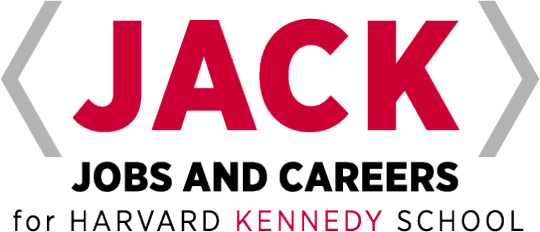
The Harvard Kennedy School has invested what I am sure is a lot of money to create a portal where students can find jobs and companies can find talent. JACK, Jobs, and Careers for the Kennedy School is a simple two-sided marketplace. The only problem is it's not used as expected, and the functionalities available are unknown to most users. So why are both students and employers not using the system? Should Harvard continue to keep the legacy system they've used for over 13 years? Those are questions I will dig in deeper in this blog.
When speaking to the Office of Career Advancement (OCA), it was clear that the school has invested resources to ensure students are provided with the best career outcomes. After all, schools are measured by the success of their alumni or how much they can donate. However, when OCA mentioned the current usage numbers for employers, students, and alumni, there was a gap in the offerings. There are currently ~10K employers who have accounts on JACK of those only 500 employers logged in by themselves, meaning that the OCA needs to go in and manually create accounts for employers and post their jobs. On the student and alumni side, there are ~10K users with accounts, of which only 1.9K users log in. What does this mean? Why is OCA so proud of those numbers?
Another point I would like to address is the fact that JACK has become a legacy system. In the interview, OCA mentioned it has a year-to-year contract with Symplicity, the vendor to JACK, providing them with the flexibility of canceling at any time. However, HKS has used Symplicity's platform for over 13 years! OCA has entertained alternatives to their credit, but what keeps them going back to Symplicity is the highly customizable nature and the high cost of switching. According to OCA, switching costs include resources, time (it would take ~6months), and security constraints.
My recommendation for OCA is they need to engage or better assess their users. They did not mention anything about asking the students or employers for feedback on the system during the interview. OCA thinks the customized fields are helpful to the students but has not assessed whether that is true and helps students find things quicker. I would suggest OCA conduct user testing and create analytics to understand the platform's performance better. In addition, they currently don't track click-through rates and time spent on pages. I think leveraging data analytics would be valuable to understand the users and their journey on the platform. Finally, I would not be proud of saying there are 10K employers and 10K students on the platform and only 2.4K active users. Although astonishing, this number is too high compared to its actual users and is likely the result of 13 years of data collection.
Overall, the platform does what it is supposed to at a minimum level – match students with job opportunities. However, I am left with the following questions: How much help does a Harvard student need to find a job? Should we think more about what job we should look for that fits our strengths instead? How do we reinvent the job search process?
To further analyze the platform I have provided a value preposition template, stakeholder map, and a project tear-down from a section in platform below.
Value Preposition Template
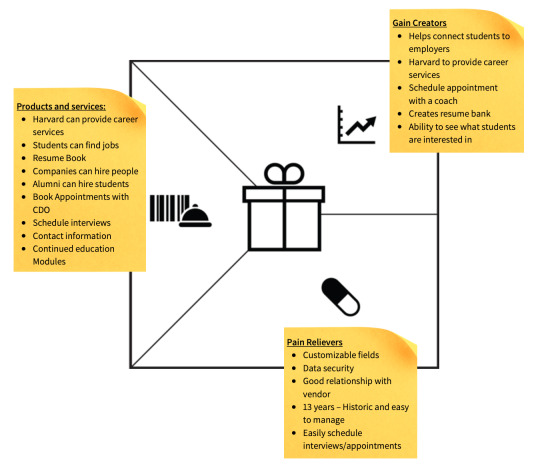
Stakeholder Map
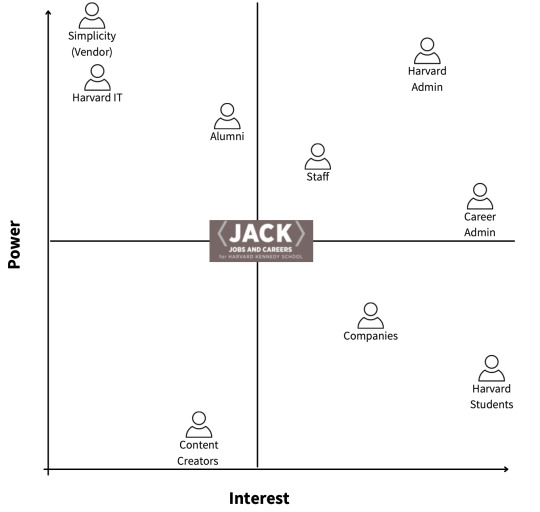
Project Tear-Down: JACK's Alumni Resources Section
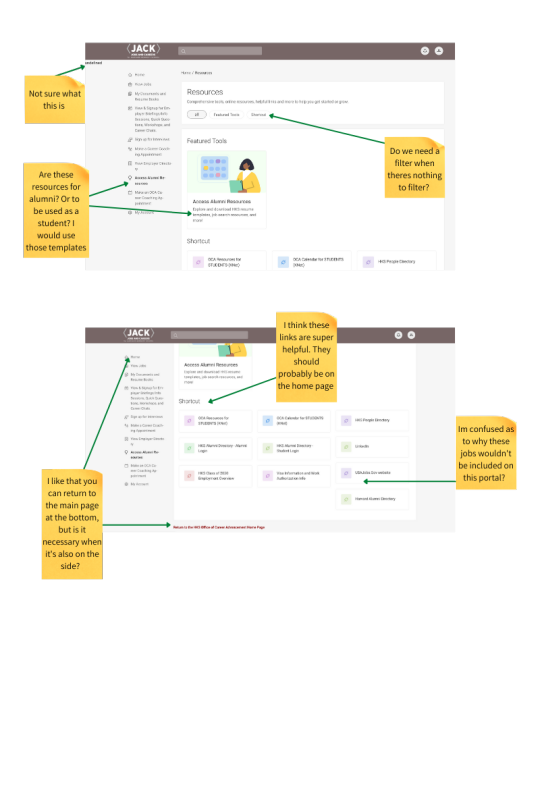
0 notes
Text
Are some brands safe?

Burberry is a sustainable and durable brand. It’s rich British history coupled with the iconic trench coat and checkered pattern has allowed it to maintain a profitable position for 150+ years. Burberry’s wealthy and famous marketing approach and select retail and licensing agreements allowed it to successfully positioned itself as an aspirational brand.
As the digital age came into play, Burberry was able to innovate by creating digital platforms and updating their strategy to focus on millenials, a growing market segment. The brand investment in digitalization created an opportunity to better understand their customers by capturing customer data on their transactions. The data allowed Burberry to improve customer experience and store productivity, and inform commercial decisions strengthening the brand’s presence. Burberry’s digital initiatives were recognized globally. A key demonstration of the brand's resilience was the Chinese New Years gift incident, which allowed Burberry to fully demonstrate the ability to continue generating sales growth of 30% in their most important market.
The successful managment of their brand (from licensing, retail, digital, contraversis, supply chain, dilution, etc..) for over 150+ years begs the question are certian brands safe? How will they continue to innovate? Can a new up and coming brand also be safe?
1 note
·
View note
Text
The innovation of the PET ROCK

In 1975, an advertising executive started selling Pet Rocks. They were marketed as live pets, in custom cardboard boxes with holes and a straw. Sales picked up during Christmas and he was able to sell over 1M pet rocks for $4 each. Why did this happen? Well when we take into consideration Rogers Five Factors on Innovation Diffusion we see that this was just a very well marketed fad.
Rogers Five Factors Application to the PET ROCK:
Relative advantage – This rock was not an ordinary rock it came from Rosarito Mexico in a fancy box. It was also not advertised as just a rock but a “PET” rock and the advantages were that you didn’t have to feed, bath, or walk it.
Compatibility – All other pets take a lot of work. This provided a new way of having a pet and it even came with a 35 page manual.
Complexity – This product was not complex, however the curiosity of what this product could be helped it gain a bit of traction. People were curious to see what was inside the box.
Trialability – The owners did not promote a trial, because they knew that people would realize it was just a rock and there was no innovation.
Observability – This was probably one of the biggest factors that led to sales. People were buying these pet rocks and were curious as to what was inside. After all it was only $4!
A question that might be lingering in your mind is, how can people buy pet rocks it there is no innovation?! Although the company ended up failing 6 months after, leaving the owner a millionaire the reality is that innovative new products fail more often than they succeed. For example, the telephone was invented in 1876, and it took ~104 years for households to adopt it as a way of communicating. I am not suggesting you go and start selling fake products to people, this man was also sued, but a new product does not have to be earth shattering with the most innovative technology to be successful.
1 note
·
View note
Text
Nudging - The indirect way to tell people what to do
Nudging has been a marketing approach used for many years to change consumers behaviors or buying patterns. Nudging is signaling something to someone without actually telling them. For example, in the COVID state we are in we see people standing 6ft apart (but how much is 6ft really?). Stores have started using markers placed on the floor of the store or the line outside to keep people apart, it’s not a sign would not suffice but the markets will allow people to know where they should stand. I realize this is a simple positive approach to this strategy, however, I can also see the negative approach to nudging where people are pushed to do things they shouldn't. For example, putting candy on the floor for little kids to follow and then a kidnaper snatched them (this is an extreme example), but it is using a similar philosophy. It is up to us to understand the power we have to change individuals behavior and hope we use our powers for good instead of evil.
1 note
·
View note
Text
As always.... amazing recap.
Branding #ForTheCulture

Culture has become one of the most critical defining factors in the most iconic and peerless of brands. While this understanding is tangible and sensible, the concept/definition of what “Culture” is, is itself fleeting. Webster offers six definitions of Culture, each with their own sub explanations, but I find this urban dictionary submission by Lawson, most helpful for this conversation in regards to branding,
“The totality of communication practices and systems of meaning; a whole way of life of a people; the social production and reproduction of sense, meaning and consciousness. Culture does not express the way of life of a people, it actively shapes up that way of life.”
This consideration of the impact of culture is relevant in the case of Corona vs. Heineken beer as the former product has built its brand on the destination appeal of Mexico, and the image of “Fun, Sun, and Beach,” while Heineken’s advertising strategy has focused on it’s product quality with campaign themes such as “Just being the best is enough.” Ultimately Heineken has remained the Number 1 imported beer brand in the US despite Corona’s emulous and resilient efforts to combat perceptions of being a lesser quality beer.
In the quality vs. associative experience battle of these brands, in the US market consumers seemingly have chosen quality to be the more appealing feature. Important to note isn’t that consumers do not necessarily actually feel Heineken is the higher quality brand, but are choosing this brand association over Corona’s – as Heineken President Michael Foley asserted, “People don’t drink beer, they drink marketing”
As Corona beer producer Groupo Modelo seeks to overtake Heineken’s market position in the future, the topic of culture will need to be a critical part of the conversation and the strategy forward. By associating with and being connected to culture, brands can offer and be understood as more than products, measured by perception of quality or experiential or emotional appeal, but rather as cultural symbols, identifiers, and membership into inclusive communities.
For Corona to be what the Supreme Brand is to Hypebeasts, what the Beats Brand are to the Hip Hop Industry, what Timberlands are to New Yorkers, or what Vans used to be to emo culture before the Hypebeasts took them over, Corona will need be intentional about it’s cultural associations. As the already preferred imported beer amongst hispanics, and as my esteemed colleague @j3sle0n notes (https://j3sle0n.tumblr.com/post/614618127633907712/the-power-of-hispanic-americans), more embrace of this critical and growing population, can help to embed the brand in the same pantheon of the aforementioned iconic brands.
5 notes
·
View notes
Text
The Power of Hispanic Americans

The US is the home of millions of immigrants from all over the world, however, the fastest growing minority group are Hispanics.
It is projected that by 2045, Hispanic people will comprise 24.6% of the total US population. - Census Bureau
Brands will need to learn and identify the most appropriate and compelling ways to target Hispanic customers. Corona has had success in advertising to this group because of their name and deep traditional Mexican roots, while other brands such as Heineken haven’t had luck in due to their foreign nature and some frankly racist ads - have you seen their “Lighter is better” ad 🤦🏽♀️, thanks Chance the Rapper. Heineken will need to better understand the changing demographics in order to target them appropriately. This really goes to say that the purchasing power of America is changing and companies who do not integrate to increase their marketing approach or provide growth opportunities within this demographic segments will be left behind.
4 notes
·
View notes
Text
The value of making the invisable visable
What do you do when no one knows what you do and what your business is? Microprocessors? Chips? What is this and what do you eat it with?
Intel decided to provide its direct consumers with a bit more visibility into what was under the hood, the hood of a computer that is. In 1994, Intel decided to introduce “Intel Inside” a marketing campaign targeted to help direct consumers understand the competitive advantage of the product they were buying. Their success was massive, over 2,700 PC makers participated in the program with over 150million Intel Inside stickers printed. This allowed the company to be positioned as the sixth most valuable brand in the world!
The biggest takeaway: HELP YOUR CUSTOMER UNDERSTAND WHAT YOU ARE SELLING!
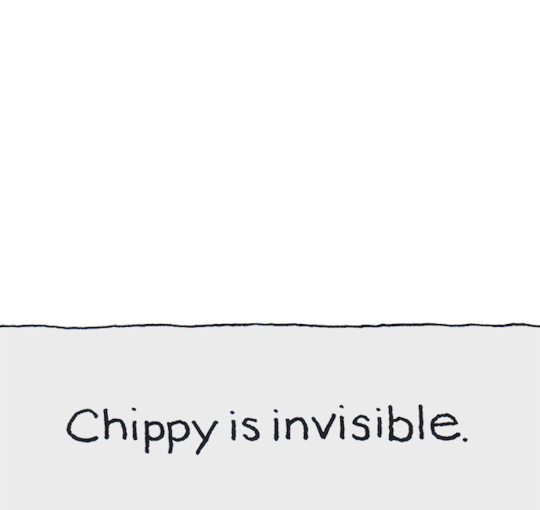
2 notes
·
View notes